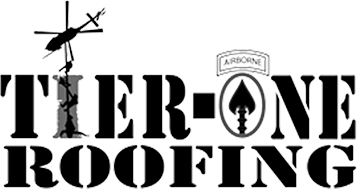Roofing: Understanding RPS insurance policies
Envision your business roof succumbing to an unforeseen storm. How would you mitigate the losses and navigate through the aftermath?
It's akin to captaining a vessel through tumultuous seas; unexpected leaks and damages can appear without warning, potentially sinking your enterprise into a financial abyss. Like the seasoned sailor who relies on the right gear and maps, businesses must equip themselves with robust Roofing Professional Service (RPS) insurance policies to weather such storms, ensuring a safe harbor is reachable despite the turbulent waters of chance.
Deciphering RPS Insurance Basics
At the cornerstone of prudent enterprise risk management lies the understanding of Roofing Professional Service (RPS) insurance policies, which safeguard businesses against the unforeseen costs associated with roofing repairs and liabilities. These policies extend beyond the realm of traditional property insurance by offering tailored coverage specific to roofing perils. By providing financial recourse for damage repair obligations and potential legal responsibilities, RPS insurance policies form a critical bulwark that fortifies a company's fiscal stability against the tempests of roofing mishaps.
What is RPS Insurance?
RPS Insurance stands for Roofing Professional Service insurance, providing targeted protection for roofing-related risks.
In 2020, hail storms caused over $14 billion in damages to properties, including roofs.
This specialized form of coverage assists with repair costs, defending against claims of negligence or damage, crucial for property resilience.
Having a robust RPS policy ensures financial shields are in place, mitigating the economic impact of roofing debacles on enterprises.
The Scope of Coverage for Your Roof
Roofing Professional Service (RPS) insurance is a bespoke safeguard, tailored to span the breadth of exposures roofs may encounter, encompassing materials, workmanship, and unexpected events. It serves as indispensable financial protection, effectively shielding enterprises from roofing system damages that can lead to significant repair costs.
Coverage limits vary based on policy structure, typically tying to the property's value or specific roofing characteristics. It's essential to comprehend these parameters to ensure adequate protection.
Exclusions are also a tenet of RPS policies, clarifying what damage types (like wear and tear or poor maintenance) are not covered. This distinction is pivotal in understanding the actual protections granted by the policy.
Many RPS policies include endorsements that tailor coverage to specific scenarios not typically included, such as coverage for certain weather events or mitigation services for water damage. These amendments can increase resilience against unexpected perils, further shielding your investments.
On top of primary coverage, RPS policies might offer supplementary benefits such as loss of business income due to roofing issues. It's crucial to assess these additional features to maximize the utility of your RPS policy.
Understanding Policy Limitations
Roofing Performance Standards (RPS) insurance policies present foundational safeguards, yet they inherently contain restrictions. Identifying and comprehending these limitations ensures that policyholders do not encounter unexpected coverage gaps when facing roofing issues.
In particular, RPS insurance policies characteristically impose a per-incident or aggregate claim limit, which stipulates the maximum payout the insurer will disburse. Hence, understanding these financial ceilings is fundamental, as surpassing them can result in considerable out-of-pocket expenses for repairs or replacement beyond covered amounts. Moreover, these thresholds necessitate strategic risk management and proactive roofing maintenance to mitigate potential overages.
Additionally, certain perils may be explicitly excluded from coverage, necessitating thorough scrutiny of your RPS policy. Recognizing and addressing these exclusions preemptively—be it through preventive measures or by seeking supplemental coverage—is vital for maintaining legislative compliance and operational continuity.
Lastly, the underwriting process itself can introduce specific policy limits tied to the roofing system's age, condition, or materials. In-depth knowledge of these determinants can guide prudent financial planning, as the accrued depreciation or wear can significantly influence the settlement figures. Keeping abreast of these factors empowers organizations to align their coverage with the evolving risk profile of their roofing assets.
Evaluating Your Roof's Insurance Needs
When navigating the intricacies of Roofing Performance Standards (RPS) insurance policies, an ounce of prevention is worth a pound of cure. It's crucial to gauge the congruency between your roof's exposure levels and the corresponding insurance provisions. A judicious assessment helps ensure optimal protection, reducing vulnerabilities that can cause financial strain when unforeseen damages occur.
In the realm of RPS insurance, one must identify what "adequate coverage" truly entails. Teleological assessments should lead to a manifestly clear understanding of risk exposures and loss potentials. Should a peril strike, being underinsured could escalate into a harrowing financial burden. Hence, leveraging precise insurance analytics is essential to obviate any chasm between potential risks and the exigent safeguards required for your roofing system.
Assessing Risk Factors for Roof Damage
Understanding the risk factors that can lead to roof damage is imperative for maintaining its integrity.
- Geographical Location: Proximity to coastal areas or regions prone to extreme weather can increase the risk of damage.
- Climate and Weather Patterns: Frequent exposure to hail, windstorms, or heavy rainfall necessitates robust roofing materials and design.
- Age and Material of Roof: Older roofing materials or those of lower quality are more susceptible to wear and tear.
- Architectural Design: Certain roof designs and slopes may be more vulnerable to accumulating water or debris.
- Maintenance History: Regular maintenance affects the longevity and resilience of roofing systems.
- Surrounding Environment: Proximity to trees and foliage can lead to damage from falling branches or accumulated debris.
Risk mitigation strategies must be tailored to address these individual factors effectively.
Selecting the right RPS insurance policy involves considering these parameters to forecast potential threats and remedies.
Importance of Accurate Roof Valuation
Accurate roof valuation ensures appropriate insurance coverage. Neglecting this step can lead to significant financial discrepancies during claim settlements.
Precise roof appraisal takes into account its current state, longevity, and replacement costs, impacting the extent of coverage. Underestimation can result in inadequate compensation, while overvaluation may lead to unnecessarily high insurance premiums. Hence, determining the true value is crucial for financial equilibrium, especially when experiencing roof failures or disasters. A careful assessment foresees potential costs, balancing the need for comprehensive coverage with reasonable premiums.
Moreover, a tailored valuation reflects specific roofing elements, such as materials, design, and installation quality. This granularity captures the true essence of your roof's worth, facilitating fair insurance practices. Inadequate valuation could render your policy ineffectual, leaving you ill-prepared during damage remediation or disputes over claims.
Thus, accurate roof valuations serve as a financial safeguard, mitigating economic losses concerning your most critical asset. Partnering with expert roofing professionals ensures precise assessments, aligning your RPS insurance policy with the real value of your building's canopy. This foresight defends against exacerbated costs during repairs or replacements, ensuring financial stability and peace of mind for property owners.
Navigating the Claims Process
Initiating an insurance claim is a meticulous venture, requiring a clear understanding of your policy's stipulations and timelines. Mere awareness isn’t sufficient; ensuring you meet all pre-defined conditions is crucial for a successful claim.
Upon detecting roof damage, promptly contact your insurer to start the claims procedure. Documentation is paramount, including photos and detailed records of the damage. Professional roofing assessments can substantially strengthen your claim, providing expert evidence of the extent and cause of the damage.
A well-executed claim involves timely notifications and substantiated documentation. Failure to adhere to these steps could impede your roof's restoration and risk financial coverage.
Steps to Filing a Roofing Insurance Claim
Upon discovering damage, immediately document its extent with clear photos and precise descriptions, setting the stage for an indisputable claim. Record the date and any events that could have caused the damage, such as a recent storm.
Contact your insurance company without delay to report the damage. This step establishes a timeline for your claim.
It’s imperative to review your insurance policy thoroughly, understanding your deductible and coverage limits, before proceeding with repairs.
Compile a comprehensive list of damaged items along with their estimated repair costs, preferably validated by a reputable roofing contractor’s assessment.
Engage a professional roofing company like Tier-One Roofing to conduct a detailed inspection. Their report will substantiate the claim, crucial for ensuring appropriate reimbursement for damages.
Finally, submit your claim with all supporting documents as outlined by your insurer’s protocol. Maintain communication to track your claim's progress and respond to any additional information requests promptly.
Handling Claim Disputes Effectively
Disputes can be a navigational challenge.
When facing a claim dispute, it is essential to understand the specific reasons provided by your insurer for the denial or undervaluation of your claim. This will require a careful review of their correspondence, as well as your own policy's terms and conditions. Clarity on these points will guide your next steps, which may involve gathering additional evidence or seeking expert assistance from a qualified roofing professional or a public adjuster.
Accuracy is paramount in claim disputes.
Ensure all communications are in writing to create a paper trail.
Know your policy and the appeals process inside out - your future roof over your head may depend on how effectively you can wield this knowledge within the scope of your policy's provisions and the prevailing regulatory framework. Keep abreast of the latest legislation and insurance industry practices, which, as of early 2023, can dictate how your claim is processed and whether you're fairly compensated. Professional advice during this process can prove invaluable, ensuring that all responses and submissions are meticulously crafted to support your position.
Upkeep & Policy Compliance
Regular maintenance is crucial for ensuring your roofing system's longevity and complying with insurance policy standards. Neglect can lead to discrepancies during claims.
It is essential that property owners schedule periodic inspections and perform timely repairs. Failing to adhere to these upkeep requirements can compromise insurance coverage, leaving critical vulnerabilities unaddressed.
Documentation of routine maintenance and repairs is indispensable in upholding policy conditions and streamlining the claims process.
Regular Maintenance to Safeguard Coverage
Consistent upkeep is paramount for retaining your roofing insurance protections.
- Conduct annual or biannual roof inspections.
- Keep detailed records of maintenance and repairs.
- Address minor repairs promptly to prevent escalation.
- Ensure maintenance is performed by licensed professionals.
- Follow the manufacturer’s recommendations for roof care.
Neglecting routine maintenance can jeopardize your coverage during a claim.
Proactive roof care sustains the integrity of your coverage and the longevity of your roofing system.
Staying Updated with Insurance Policy Changes
In the dynamic landscape of insurance, RPS (Roofing Professional Supplementary) policy alterations can be frequent, necessitating vigilant attention from policyholders. Failure to stay conversant can lead to coverage pitfalls.
Changes to RPS policies can stem from legislative amendments, industry shifts, or underwriters’ risk reassessments. Stakeholders must monitor these to ensure alignment with new provisions.
Policyholders should establish a methodical process for reviewing insurance documents, partnering with experts to decode the legalese. This systematic approach can avert misunderstandings and maintain policy efficacy, ensuring that coverage reflects the current risk environment.
Adopting a proactive stance towards policy updates is pivotal. For organizations, cultivating relationships with knowledgeable insurance agents and roofing specialists provides an indispensable resource. These professionals can offer guidance on interpreting policy nuances and suggest strategies to optimize coverage, ensuring robust protection against evolving risks.


